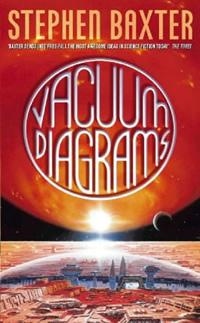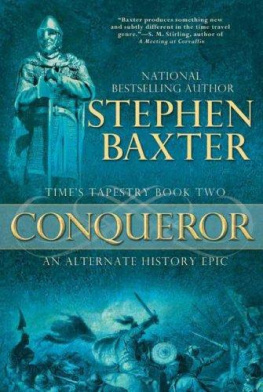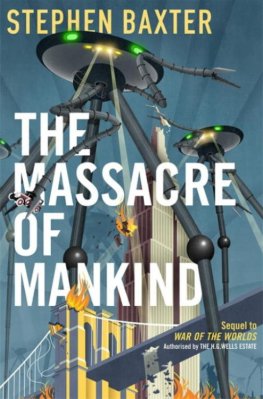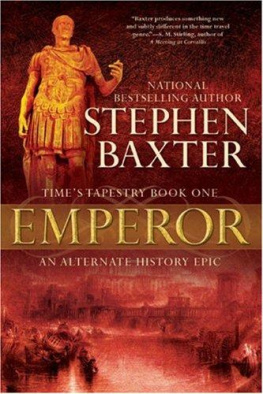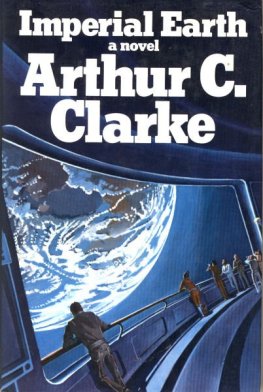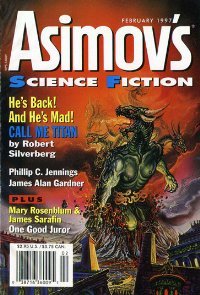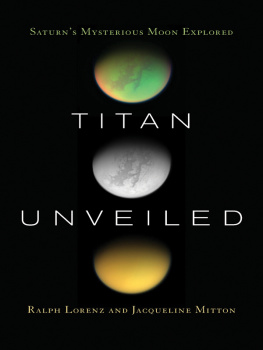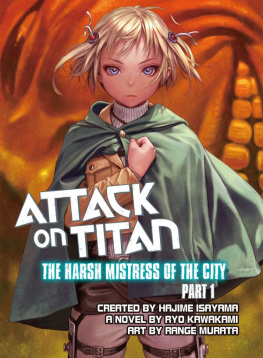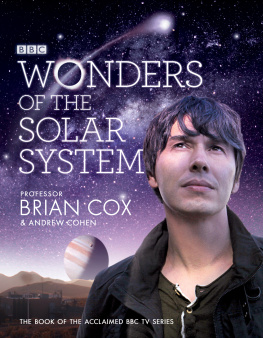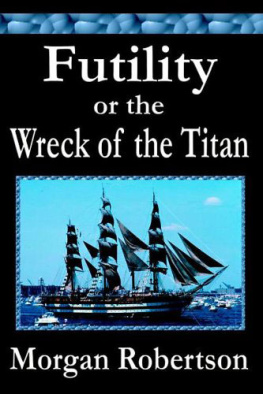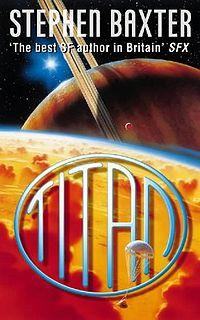For Tony, Christine and Catherine
I am grateful to the following for assistance with research, suggestions and comments:
Jardine Barrington-Cook and his colleagues of the Space Division, Logica U.K. Ltd., who developed the guidance software for the Huygens Titan landing probe.
Mitchell Clapp of Pioneer Rockerplanes, author of the Black Horse spaceplane proposal.
Martyn Fogg, author of Terraforming: Engineering Planetary Environments, the standard text on the subject.
Dr. J. F. Zarnecki of the Space Sciences Unit, Kent University, U.K., who developed the surface science package for the Huygens probe.
And to the following for reading versions of the manuscript:
Simon Bradshaw
Eric Brown
Kent Joosten of the Solar System Exploration Division, Johnson Space Center, NASA.
After seven years of flight, after travelling a billion miles from Earth, the human spacecraft Cassini reached Saturn.
Cassini was about the size of a school bus. Thick, multi-layer insulation blankets covered most of the crafts structure and radiation-hardened equipment. The blankets outermost layer was translucent amber-colored Kevlar, with shiny aluminum beneath; the two layers together made it look as if the spacecraft had been sewn into gold.
But Cassini looked its age.
The blankets were yellowed, and showed pits and scars from micrometeorite impacts. The brave red, white and blue flags and logos of the U.S., NASA, ESA and the contributing European countries, fixed as decals on the insulation, had faded badly in the years since launch. Cassinis close approach to the sun, with the intense heat and solar wind there, had done most of the damage.
A fat pie-dish shape, ten feet across, clung to the side of the Cassini stack, so that the craft looked like a robot warrior going to battle, clutching a shield. In fact, the shield was a combined aeroshell and heat shield for a separate spacecraft, called Huygens, which was designed to land on Saturns largest moon Titan. The results Huygens gathered would serve as ground truth, confirmation and calibration for the more extensive orbital surveys Cassini would perform of the moon.
Now Cassini reached a point in space almost four million miles from Saturns cloud tops.
From here, the planet looked the size of a quarter-inch ball bearing held at arms length. Spinning in just ten hours, the planet was visibly flattened. A telescope might have shown its yellowish cloud tops, with their streaky shading and complex, anti-cyclonally rotating cloud systems. The sun was off to the right, with its close cluster of inner planets, so Saturn, seen from the probe, was half in shadow. The ring system, tight around the planet, was almost edge-on to the spacecraft, all but invisible, and it cast sharp shadows on the cloud tops.
Titan the largest of the moons, orbiting twenty Saturn radii from its parent was a reddish-orange pinprick, well outside the ring system.
Titan appeared to lie directly ahead of the spacecraft.
It was time.
Pyrotechnic bolts fired, silently, releasing puffs of vapor that immediately crystallized and dispersed. Three springs pushed Huygens away from Cassini, and a curved track and roller made the released probe spin, at seven revolutions per minute.
The path of Huygens and its parent probe diverged, at half a mile per hour.
Two days after the release, with the two craft about thirty miles apart each clearly visible from the other, as a bright, complex star Cassini fired its main engine once more, to deflect its orbit. Now Cassini and Huygens parted more rapidly.
Cassinis nominal mission was a four-year orbital tour of the Saturn system. Its objectives were to study Saturns atmosphere, the atmosphere and surface of Titan, the smaller icy satellites, the rings, and the structure and physical dynamics of the magnetosphere.
And while Cassini flew on, Huygens dormant, unpowered, a mere ten feet across, spinning slowly for stability fell directly towards the burnt-orange face of Titan.
It was November 6, 2004.
It would be a second-generation star.
It formed from a spinning cloud, of primordial hydrogen and helium, polluted by silicon, carbon and oxygen: rock and snow, manufactured by the first stars, the oldest in the Universe.
The cloud was a hundred times the width of the Solar System, to which it would give birth.
The cloud collapsed, and spun faster. It heated up. At last, the cloud became unstable, and broke up into successively smaller fragments.
It shrank. The cloud became opaque, and the heat it generated as it collapsed could no longer escape.
The core imploded suddenly.
The collapse made the core, a protostar, shine brilliantly, ten thousand times as bright as the sun that would shine on mankind.
Eventually the core was so hot that hydrogen nuclei began to fuse to helium. The thermonuclear energy generated balanced the inward gravitational force. The protostar stopped contracting.
It was a star. The sun.
The remaining nebula cloud condensed into dust particles and snowflakes. The orbiting particles collided with each other, and because of the stickiness of the ice, and the organic tars coating the dust they formed a flat disc of swarming planetesimals, objects ranging in size from a few yards across to several miles.
The planetesimals collided; some grew in size, forming planets, and others fragmented.
Most of the nebulas mass was lost in the process.
Earth formed in a million years. Earth was dominated by rock, its snow boiled away by the young suns heat, its surface pounded by planetesimals.
Further out, it was different.
Further out, everything was moving more slowly, and the nebula was less dense. It was cold enough for water, carbon dioxide, ammonia and methane to condense into ice. So while the inner planets were dominated by rock, the accreting planetesimals at Jupiters orbit and beyond swept up dirty snow.
Hundreds of millions of years after Earth, Saturn formed, gigantic, gaseous. It radiated heat as it collapsed, warming the orbiting fragments of nebula gas and dust.
Around Saturn, an accretion disc formed. Moons coalesced, from a mixture of water ice, silicates, ammonia, methane and other trace elements.
One of them was massive.
It was half rock, half ice. It heated as it collapsed, because of its huge mass; the primordial ices melted and vaporized. The rock settled to the center, because of its greater density. At last, at the core of the moon, a ball of silicate formed, overlaid by a shell of ice, six hundred miles thick.
An ocean gathered. It was a mixture of ammonia and methane, A dense atmosphere was raised over it. The new world was a cauldron, with pressures hundreds of times that of Earths sea level in human times, and temperatures measured in hundreds of degrees.
The high pressure and temperature were sustained, for millions of years. And in the organic soup of the ammonia-water ocean, complex chemistry seethed.
But the new ocean and atmosphere were not stable. Ultra-violet flux from the young sun beat down; planetesimals continued to fall, blasting away swathes of the air; the atmospheric gases dissolved in the ocean.
The atmosphere cooled and thinned. The pressure dropped.
The ocean froze over.


